Un-American Activities: Starbucks in Kyoto
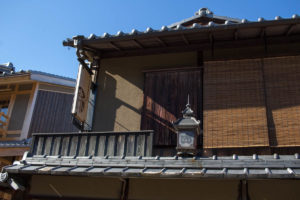
Japan has no shortage of high-design Starbucks locations, some where you would have to strain to even see a logo. I’m neither a Starbucks person, nor much of a coffee snob despite growing up in the Pacific NW, the epicenter of second-wave coffee culture. Pre-ground Cafe Bustelo is my morning jam, followed by two cups of watery office coffee of unknown provenance on the days I go to the office.
But I almost always end up at a Starbucks when traveling to other countries. Mostly to gawk at any localized beverages or snacks. I was introduced to an unknown-to-me sweet, lamingtons, little Australian square cakes, frosted, and coated in coconut flakes, at a Starbucks in Hong Kong. I would always get one in the airport (it makes it sound like I regularly hit that airport; I’ve been in and out of it maybe eight times, none in recent history).
So, it was not a leap to seek out the Starbucks in Kyoto that took residence in a Taisho-era teahouse last summer. Even though there is a sign hanging beneath the shingled eaves, it would be easy to miss the Starbucks on the cobblestone path up to Kiyomizu-dera Temple, a UNESCO World Heritage site in a city lousy with shrines, temples, and Michelin stars. The wood-clad building on the corner blends into the surrounding shops stocked with more pickled things than you could ever imagine being pickled and souvenir cans of Pringles in takoyaki flavor, the octopus balls that are a regional claim to fame. (I am still kicking myself for neither trying takoyaki nor buying these Pringles.)
Look past the Japanese tourists dolled-up in rented kimonos, though, and you’ll see a slate-blue noren with the familiar mermaid marking the entrance, as well as the original racy topless, two-finned logo on an iron lantern that looks as if it has been there for more than a century but could’ve been crafted in 2017.
The interior is dim, understated, with cement floors, wood beams, and neutral tones that lend a spartan quality more aligned with an art gallery than coffee shop. Rock gardens and bamboo fountains occupy outdoor nooks. It’s genuinely a respite from the weaving mobs outside that neither favor walking on the right or the left. I don’t understand this about Japan. Even subway stations would sometimes have arrows indicating to walk on the right, which pleased the rule-lover in me, then sometimes on the left. That’s chaos.
Starbucks has a long history in the country, as it entered Tokyo, its first international market, in 1996. The Seattle-based company has added 1,303 stores since. Kyoto alone has 33.
The newer world’s biggest Starbucks in Shanghai has been grabbing recent attention among the followers of chain-related happenings. That’s all fine for more-is-more China, but they do things a little differently in Japan where hypermodernity clashes with analog traditions. The country clings tightly to phone-only reservations and a preference for cash transactions, inconveniences for digitally reliant foreigners. (Of course, you can pay by app at Starbucks in Japan..)
Upstairs, customers patiently wait on benches for their turn in one of three tatami rooms covered in the traditional straw mats and zabuton cushions for seating. There are friendly reminders to remove your shoes and low shelves to store them. No worries about anyone making off with your footwear–this is Japan, the lost and found capital, after all.
(My travel companion left his iPhone in a cab, and we got it back the next day, only with the help of a Japanese speaking friend who communicated with everyone and filled out the paperwork–did I say they like analog transactions? This amazing turn of events, spurred us to pay it forward the next day when we found a phone dropped on the sidewalk and turned it into a police station on the corner. They had to get an English-speaking translator on the phone to explain we had a right to claim any reward money as well as being reimbursed for travel to turn it in!)
Maybe in other parts of the world you might feel embarrassed for showing interest in an American chain rather than immersing yourself in authenticity, but most Japanese citizens aren’t judgmental like that. No one in Tokyo is ashamed to line up for Shake Shack or overpay for nacho fries at Taco Bell. A few gawkers were taking photos of this 100-year-old-plus structure and young women with expensive SLRs had no problem striking poses or setting up shots of pastel drinks, presumably to share on Instagram, or more likely, Line.
Perhaps not my best photo, but it does capture something essential to my character.
Blessedly, pumpkin spice has not yet infiltrated the autumnal Japanese consciousness (though they are mad for sweet potatoes). Instead, seasonal beverages included Grapy Grape and Tea Jelly Frappuccino with blobs of gelatinous black tea and sliced grapes bobbing around, Hojicha Cream Frappuccino, made from the roasted green tea, and a Christmas colored Candy Pistachio Frappuccino sprinkled with raspberry cookie crumbles. This nutty beverage might be the only treat in Japan of that pale green hue not flavored with matcha. No surprise, the glass case at the counter is a sea of green tea scones, pound cake, and doughnuts. There is no Thanksgiving buffer outside of North America so songs like “Winter Wonderland” and “Sleigh Ride,” reworked by The Platters and Earth, Wind & Fire were on rotation the fourth Thursday in November.
Un-American quirks abound, like the advertised existence of a smaller size than “tall.” It is called “short.” There are tiny thimble-sized plastic containers of milk, no self-serve pitchers, and no almond or coconut pseudo-milks (soy milk is 50 yen extra). Perhaps the most un-American thing about the Kyoto Starbucks, though, was the clientele. Westerners made up fewer than half of the customers and I didn’t hear one familiar accent.
Starbucks * 349 Masuyacho Kodaiji Minamimondori Shimokawara Higashi Irushiigawa, Higashiyama-ku, Kyoto, Japan

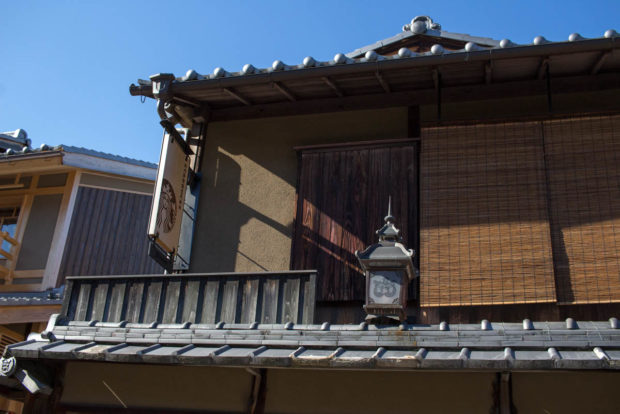
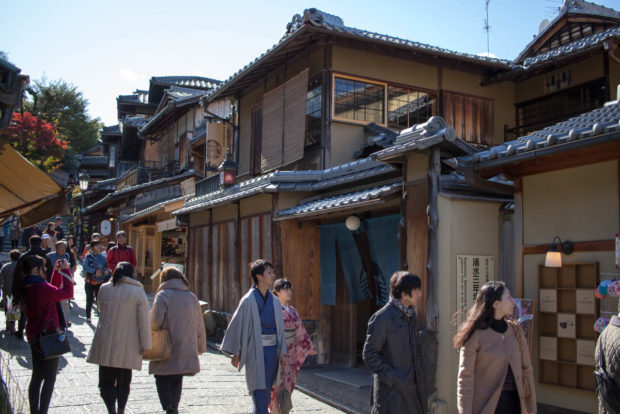
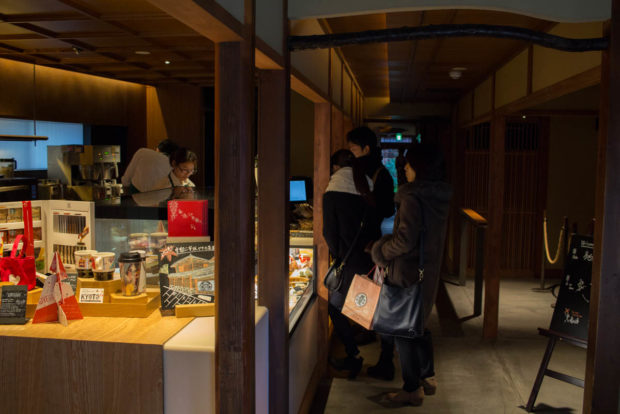



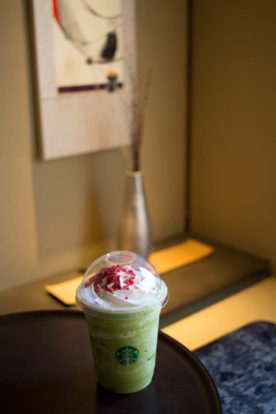
 Follow
Follow




